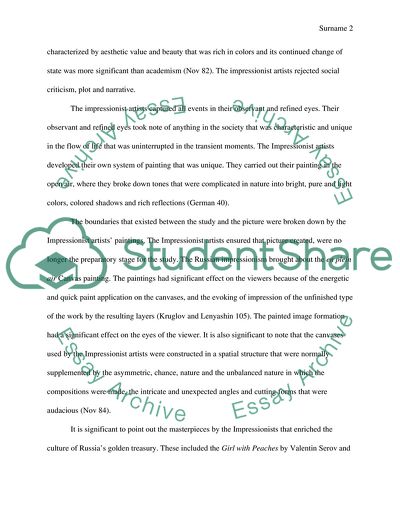Cite this document
(“Art History - Russian Impressionism Essay Example | Topics and Well Written Essays - 1750 words”, n.d.)
Retrieved from https://studentshare.org/visual-arts-film-studies/1667174-art-history-russian-impressionism
Retrieved from https://studentshare.org/visual-arts-film-studies/1667174-art-history-russian-impressionism
(Art History - Russian Impressionism Essay Example | Topics and Well Written Essays - 1750 Words)
https://studentshare.org/visual-arts-film-studies/1667174-art-history-russian-impressionism.
https://studentshare.org/visual-arts-film-studies/1667174-art-history-russian-impressionism.
“Art History - Russian Impressionism Essay Example | Topics and Well Written Essays - 1750 Words”, n.d. https://studentshare.org/visual-arts-film-studies/1667174-art-history-russian-impressionism.


